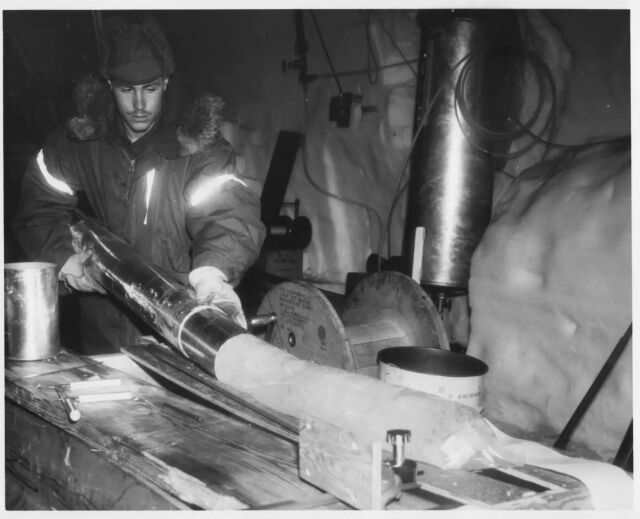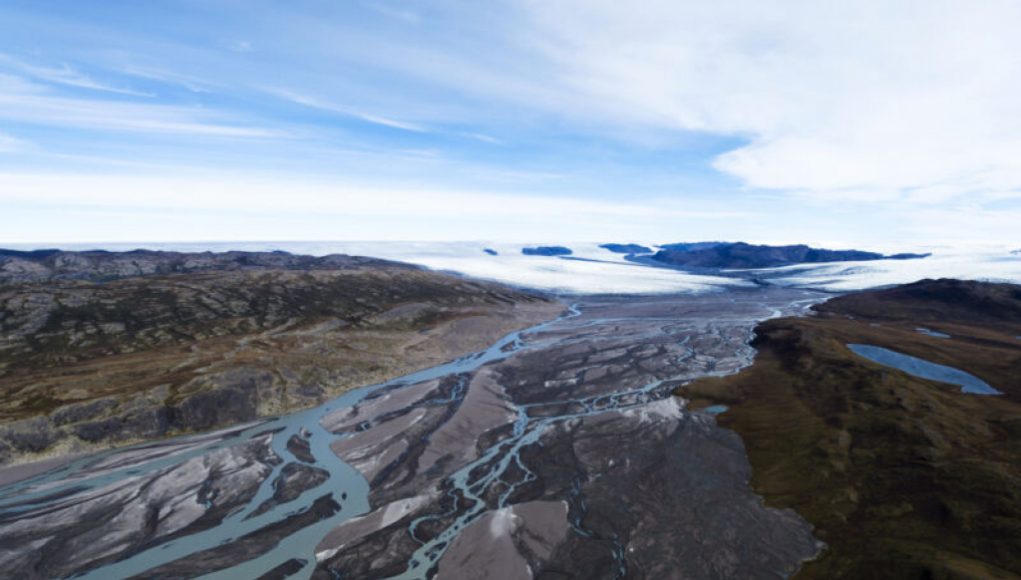About 400,000 years ago, large parts of Greenland were ice-free. The island’s northwest highlands were bathed in the warm rays of the sun, with a scrubby tundra and a forest of spruce trees teeming with insects covering the southern part of Greenland. This was a time when global sea levels were much higher, reaching 20 to 40 feet above today’s levels, and land that now houses millions of people was submerged beneath the ocean.
While scientists have long known that the Greenland ice sheet had disappeared in the past million years, the exact timing remained a mystery.
In a groundbreaking study published in the journal Science, we have finally determined the date using frozen soil extracted from beneath a nearly mile-thick section of the Greenland ice sheet, which was collected during the Cold War.
The date we discovered is approximately 416,000 years ago, and the ice-free conditions lasted for up to 14,000 years. This period coincided with one of the longest interglacial periods since the ice sheets first covered the high latitudes 2.5 million years ago. Understanding the duration, magnitude, and impact of this natural warming event can provide valuable insights into the Earth we are shaping for future generations.
Advertisement
A world preserved under the ice
In July 1966, a team of American scientists and US Army engineers completed a remarkable six-year drilling project through the Greenland ice sheet. This endeavor took place at Camp Century, an extraordinary military base powered by nuclear energy and composed of tunnels dug into the ice sheet.
The drilling site, located 138 miles from the coast in northwest Greenland, was covered by 4,560 feet of ice. After reaching the bottom of the ice, the team continued drilling an additional 12 feet into the frozen, rocky soil beneath.

In 1969, geophysicist Willi Dansgaard’s analysis of the ice core from Camp Century unveiled the dramatic climate changes that occurred over the past 125,000 years. Cold glacial periods, characterized by rapid ice expansion, gave way to warm interglacial periods, causing ice melt and a rise in sea levels that flooded coastal areas worldwide.
For nearly three decades, the 12 feet of frozen soil from Camp Century received little attention from scientists. Some studies examined the pebbles to understand the underlying bedrock beneath the ice sheet, while others suggested that the frozen soil preserved evidence of a warmer time than the present. However, without a reliable method to date the material, these studies went largely unnoticed. By the 1990s, the frozen soil core had disappeared.
A few years ago, our Danish colleagues rediscovered the lost soil buried deep in a freezer in Copenhagen. This discovery prompted the formation of an international team to analyze this unique frozen climate archive.
In the uppermost sample, we made an astonishing find – perfectly preserved fossil plants. This provided undeniable proof that the land beneath Camp Century had been ice-free at some point in the past. The question remained: when exactly did this occur?
In a recently unearthed news article from 2003, scientists had successfully recovered and studied samples of frozen soil that was over ten-thousand years old. It was remarkable to find such ancient samples of soil, however the research that followed provided a cautionary tale for the future.
These ancient samples of soil were frozen in the permafrost of Norway’s Svalbard Global Seed Vault, and were found to be degraded, oxidized and comprised mostly of inorganic material. The soil was so degraded that it was no longer suitable to support any lifeforms that were living on it before it was frozen.
This study serves as a stark reminder of the fragility of ecosystems and their resilience to environmental changes. It also highlights the importance of preserving our ecosystems and taking steps to ensure their survival in spite of the challenge posed by the climate crisis.
The study further concluded that while soil does have some form of natural resilience, it can be easily degraded if not properly managed. This recovery and research of long-forgotten frozen soil is something that should encourage further research into preserving our world’s precious ecosystems and ensure that we don’t suffer the same fate as these ancient soils.
The finding of this soil sample is an important one for our understanding of the fragility of ecosystems and a powerful reminder to take care of our planet for future generations. By studying the degradation of this soil this can help to provide an important insight into the effects of climate change and an opportunity to better understand the importance of preserving our earth’s precious natural resources. We must act now if we are to avoid experiencing similar results in the future.




















